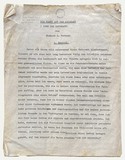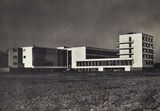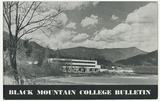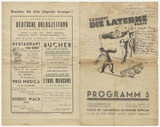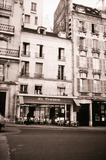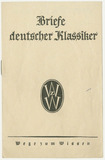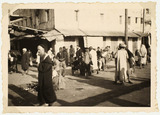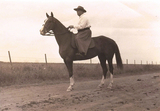Autobiography
Large numbers of exiled authors and artists in other media wrote autobiographies. Many of them described themselves in their works as “representatives of their generation” (Richard Critchfield, “Some reflections on the problems of exile autobiography” („Einige Überlegungen zur Problematik der Exilautobiographik“), Jahrbuch Exilforschung, 1984).
Bauhaus
The Bauhaus was founded in 1919 by Walter Gropius as a school of design in Weimar with the aim of unifying art and handcrafts. The training course consisted of theoretical and practical instruction in the furniture-making, weaving, metal, wall painting, typography, ceramics, stage and sculpture workshops.
Black Mountain College
The Black Mountain College aimed to guide young people in finding their own individual path to the arts. Potential was discovered and promoted through joint working and experimentation. Students and teachers organised both the lessons and their everyday existence independently and democratically.
Book design
A varied culture of book design evolved in Germany in the first third of the 20th century. Font designers, book cover designers and illustrators with different styles and from different design schools took a lively artistic approach towards the overall presentation of a book, typography and cover design.
Brazil
Immediately after the Nazis seized power in 1933, only few refugees from Germany considered Brazil as a country to flee to. It wasn’t until the persecution of Jews and opponents of the Nazis became increasingly severe, after the November pogrom of 1938 and after other countries began to severely restrict their immigration policies, that more and more refugees headed for Brazil.
Cabaret
The nature of cabaret lies, in part, in its criticism of political and social conditions. When the Nazis seized power in 1933 this art form faced profound danger. As early as 28 February 1933, the day after the Reichstag fire, the constitution was changed: freedom of opinion and right of assembly were restricted.
Café Le Tournon
Popular meeting place in the 6th Arrondissement Like the coffee houses and salons in Vienna and other cities, the cafés of Paris were attractive meeting places that played an important role for intellectuals and writers. For those living in exile, they often doubled as a study or reading room.
Camouflage publications
In order to protect their readers and distributors against reprisals, many texts that served the resistance were printed in neighbouring countries and circulated in Germany in a camouflaged form.
Casablanca
After the occupation of France in 1940 and the division of the country into an occupied and a free zone, the travel route of many refugees who wanted to go overseas shifted by necessity to the African continent. With the French ports on the Atlantic under German control and restrictive transit regimes in Spain and Portugal, people wishing to leave Europe frequently had no choice but to depart via the last free port in Marseille.
Changing occupation and work in exile
From artist to ...Few exiles had the international prominence or the financial wherewithal - e.g.
